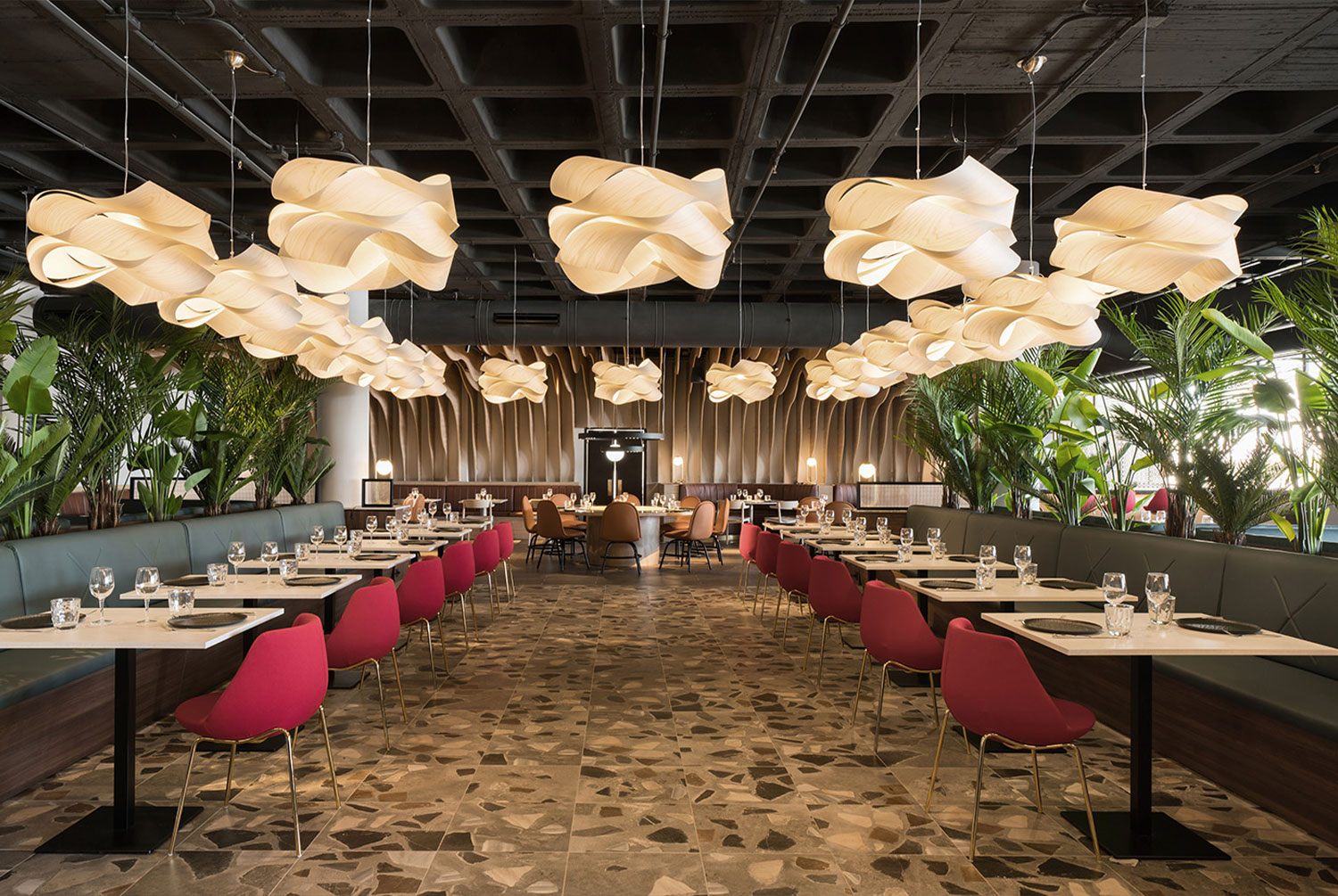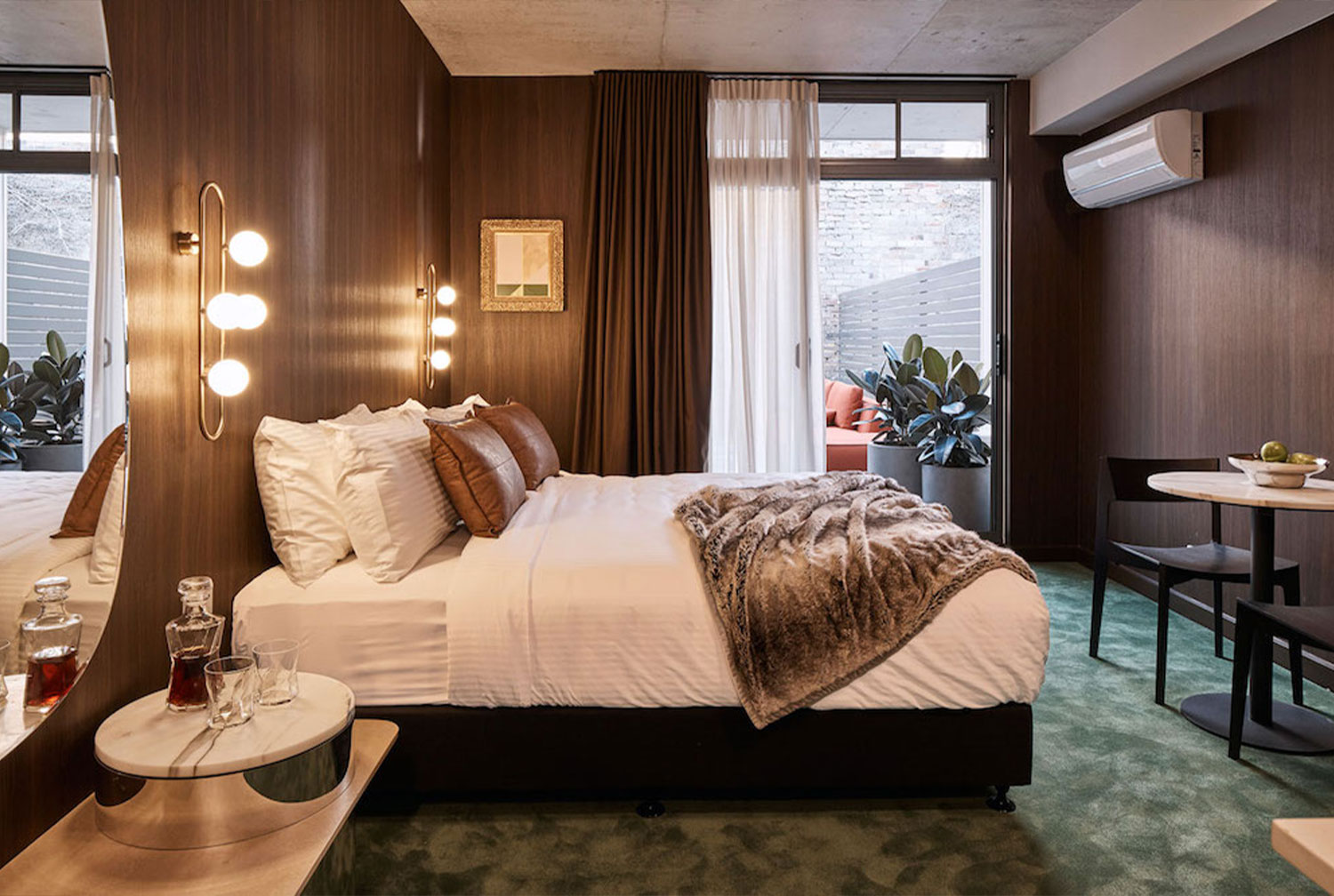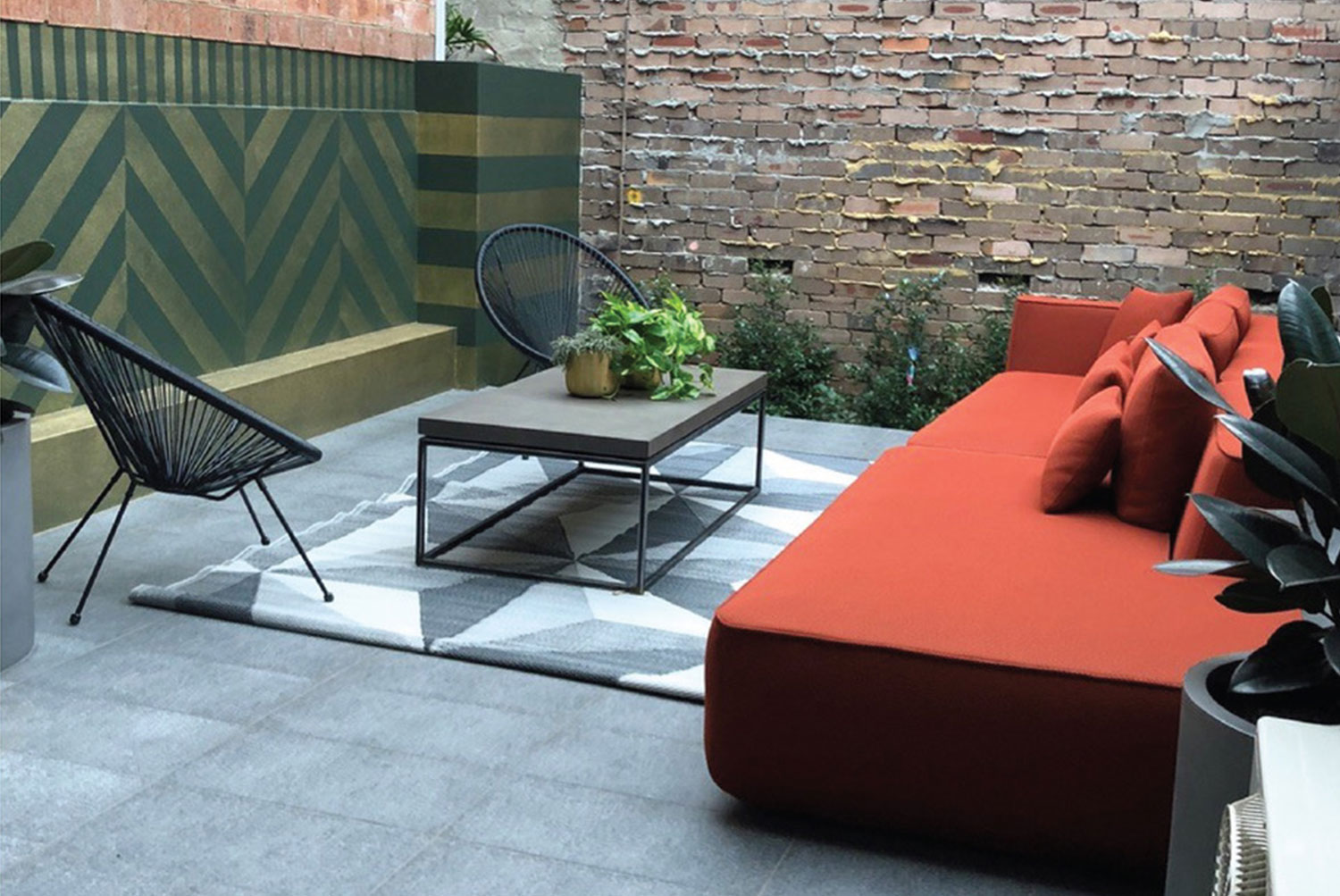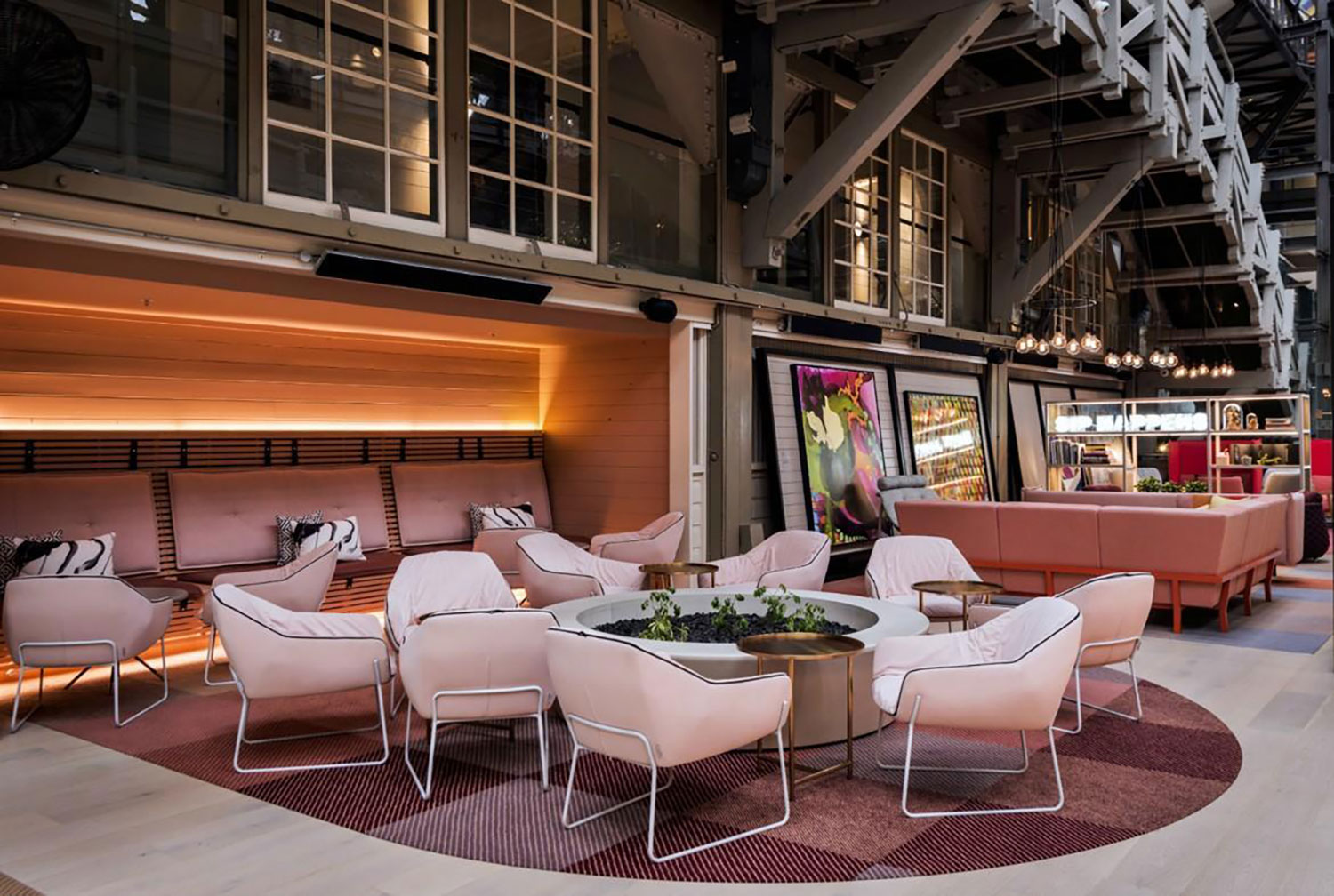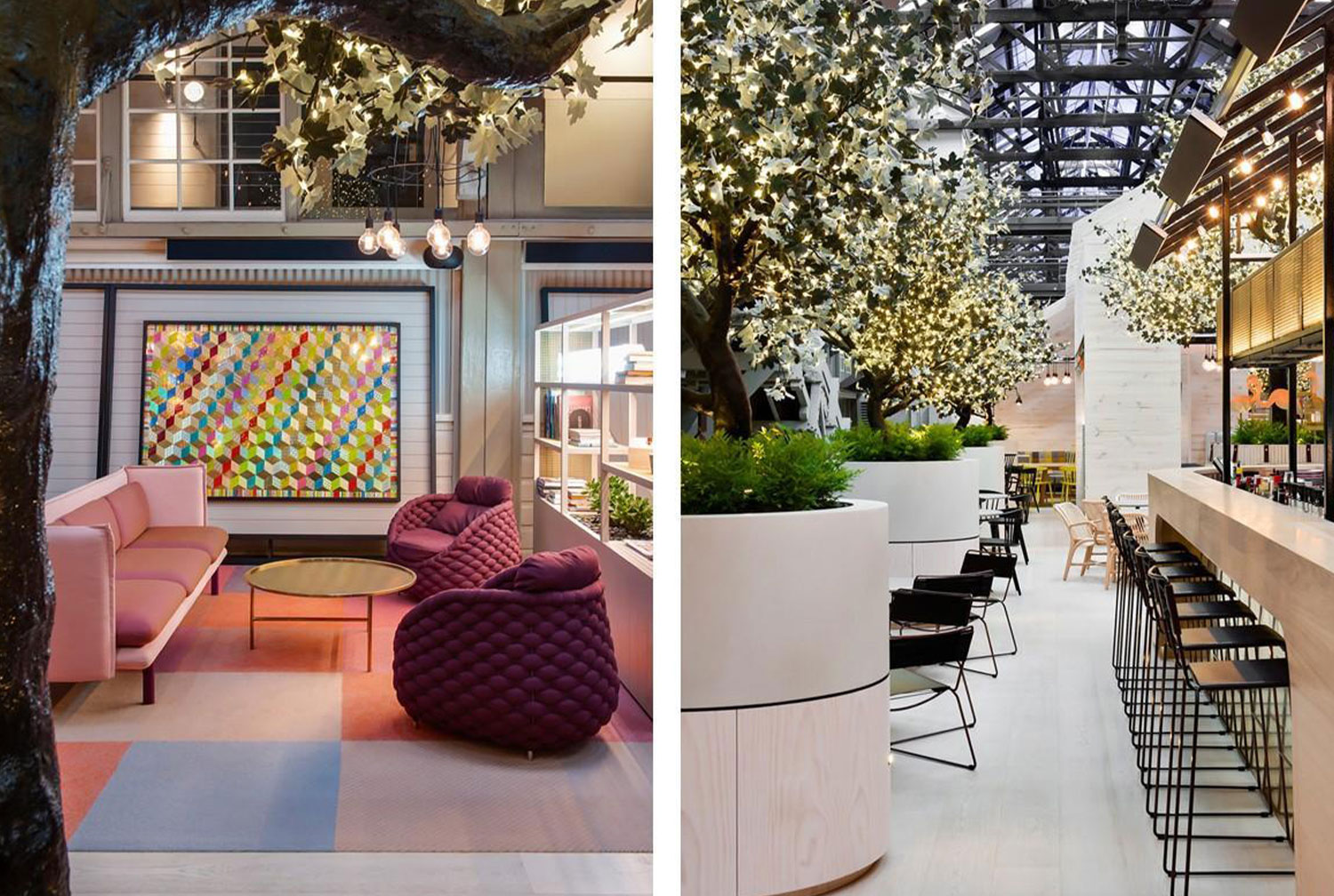GET 20% OFF
By subscribing to our newsletter
Hospitality Design 2019/20: What’s Your Point of Difference?
Social media and the sharing economy have had a significant influence on hospitality venues, both directly and indirectly. It’s meant that hotels, restaurants, bars and cafés need a clear point of difference in order to attract and retain customers, and has translated into eye-catching, meaningful design. Here are five trends we’re seeing in hospitality design.
Create an authentic experience
Customers connect with brands that offer an authentic experience. This experience is what will distinguish a hospitality venue, and will reflect a brand’s values, ethos and the customers it wants to attract. Colour and materials can be used to convey this story and contribute to a memorable experience. We see a move away from soft muted colour towards bold shapes and hues, as designers and venues are consistently inspired to create something new.
Ladon Grill Restaurant, designed by Estudihac, features Sancal’s Magnum chairs in bright red, LZF’s Swirl pendant and an abundance of plants, creating a dreamlike atmosphere inspired by the Greek myth of the Garden of the Hesperides.
Be savvy with social media
Social media has become a key marketing tool for hospitality venues and has significantly influenced the design and marketing. Captivating interior and picture-perfect dishes entice customers and encourage them to post on Instagram and Facebook. However, we’re also seeing the start of a movement to discouraging phone use.
Sara restaurant in Toronto, designed by Odami, asks diners to switch off their phones, and provides design details that encourage guests to engage with each other and the built form, rather than social media. Tables have compartments for storing away phones, and a focus on texture, materiality and atmosphere is intended to sustain diners’ attention.
Keep it local
Creating an inherently local experience is one way that hospitality venues are distinguishing themselves. Using local artists and designers helps tell a genuine story of a particular location, and one that can’t be replicated anywhere else.
All the rooms in The Collectionist Hotel in Sydney have been individually designed by local studio and artists, including Amber Road, Willis//Sheargold and Pattern Studio, with artworks by Dion Horstmans, Kirsty Ludbrook, Brooklyn Whelen and Matt Dampney. Each room has a different design concept, and furniture from KE-ZU has been used throughout The Collectionist Hotel to help create each distinctive room. This includes the Loft lounge chair by Bernhardt Design; Plump sofa and Senso outdoor chair by Expormim; Africa armchair, Brooklyn stool and Adan stool by Vondom; and Round lounge chair, Grace outdoor dining chairs and Heaven lounge armchair by EMU.
Reimagine what’s on offer
With competition from AirBnb, hotels have had to reimagine the experience and functions they offer in order to attract customers. Lobbies, reimagined as bars, coffee shops and coworking spaces, have become buzzing social hubs for tourists and locals alike. Searching for shared connections, local knowledge and memorable experiences, these customers want access to communal spaces, particularly if they travel alone.
This crossover of work, home and travel design sectors is evident at Ovolo Woolloomooloo, designed by HASSELL. The lobby is a vibrant and cosmopolitan destination zoned to create more intimate environments that encourage guests and visitors to linger longer. People can gather, work or spend time alone in the lounge, bar and dining areas, which feature Expormim’s Fontal rattan armchair; Sancal’s high-sided Rew sofa; and Patricia Urquiola’s reinterpretation of the classic Windsor, the Comback chair.
Go green
Hospitality venues are increasingly recognising the need to operate in an environmentally responsible manner for the sake of the planet and to attract customers. New restaurants and cafés are being established on ethical values that are being translated into the design, and hotels are upping their green credentials with energy-reducing technologies, reclaimed materials and small but significant strategies, such as eliminating single-use plastics. As furniture designers also focus on sustainability, timber furniture naturally lends itself to hospitality venues going green.
For more information about furniture and lighting for hospitality venues, drop by the KE-ZU showroom at Alexandria or view the products online.
- 2020
- 2019
- 2018
- 2017
- 2016
- 2015
- 2014
- 2013
- 2012
- 2011
- 2010
- 2009


